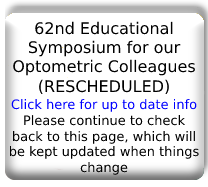Northern New Jersey Eye Institute on ZocDoc
Eyelid Surgery (Blepharoplasty)
Blepharoplasty can rejuvenate puffy, sagging or tired-looking eyes by removing excess fat, skin and muscle from the upper and lower eyelids. It may be performed for cosmetic reasons or to improve sight by lifting droopy eyelids out of the patient's field of vision. Blepharoplasty can be combined with BOTOX® treatments to raise the eyebrows or reduce the appearance of wrinkles, crow's feet or dark circles under the eyes.
The procedure is usually performed in an office with local anesthesia and lasts 45 minutes to a few hours depending on how much work is done. Incisions are made along the eyelids in inconspicuous places (in the creases of the upper lids, and just below the lashes on the lower lids). The surgeon removes excess tissue through these incisions and then stitches them closed with fine sutures. In the case that no skin needs to be removed, the surgeon will likely perform a transconjunctival blepharoplasty, where the incision is made inside the lower eyelid and there are no visible scars.
Ptosis Repair
Ptosis is a condition in which the eyelid droops. It is caused by a weakness or separation of muscles deep within the eyelid. Ptosis does not involve excess skin or tissue in the eyelid (a condition called Dermatochalasis). It is usually a result of aging, but some people develop ptosis after eye surgery or an injury, and some children are born with the condition. A brief surgical procedure can eliminate the drooping. Many young patients with mild to moderate ptosis do not need surgery early in life. Patients who are also suffering from excess skin may choose to undergo blepharoplasty at the same time as ptosis repair. Children with ptosis should be examined regularly to check for other vision problems including Amblyopia ("lazy eye"), refractive errors and muscular diseases.
Pre Operative Bilateral Upper Lid Blepharoplasty
Before:
After:

"Dr. Crane is one of less than 100 doctors in the United States to be able to bring this new technology to his patients."
"Dr. Crane is one of less than 100 doctors in the world who have been approved to participate in the iDose FDA trial"
iDose exchange
"Dr. Crane is one of less than 15 doctors in the United States to perform this procedure for his patients."
"Dr. Crane is one of less than 15 doctors in the world who were approved to participate in the iDose exchange FDA trial"
Infinite
"Dr. Crane is one of less than 15 doctors in the United States who were able to bring this new technology to his patients."
"Dr. Crane is one of less than 15 doctors who were approved to participate in the iStent Infinite FDA trial"
General
Eye Injuries From Paintball Guns, Air Guns and Other Projectile Toys
FDA issues warning for contaminated eye drops that can cause infection.
"Dr. Crane and Glaukos have a long history of working together on several medical device and pharmaceutical studies. He has been able to offer these technologies to his patients and the products from these studies have progressed to help treat hundreds of thousands of patients in need."
Employment Opportunity: Optometrist in Essex, Morris, and Union Counties
Dr. Crane Top Doctor 2019
Congratulations to Dr. Crane for being the 2nd surgeon in the United States to perform a new treatment for Glaucoma. We hope this treatment will bring further advances in the care of our glaucoma.
ASCRS Thanks Dr. Crane for Volunteer Work
Dr. Spier Named to OSN's Premier Surgeon 300
Dr. Spier: Weekend Comedian
Dionne Warwick on Dropless Surgery [VIDEO] (Surgery Performed by Dr. Spier)
Dr. Crane and Staff congratulate their patient Dr. William Scaife
Dr. Crane named to the ASCRS Council of 100
 Dr Crane meets one of his favorite Sharks, Daymond John, at a book signing!
Dr Crane meets one of his favorite Sharks, Daymond John, at a book signing!














